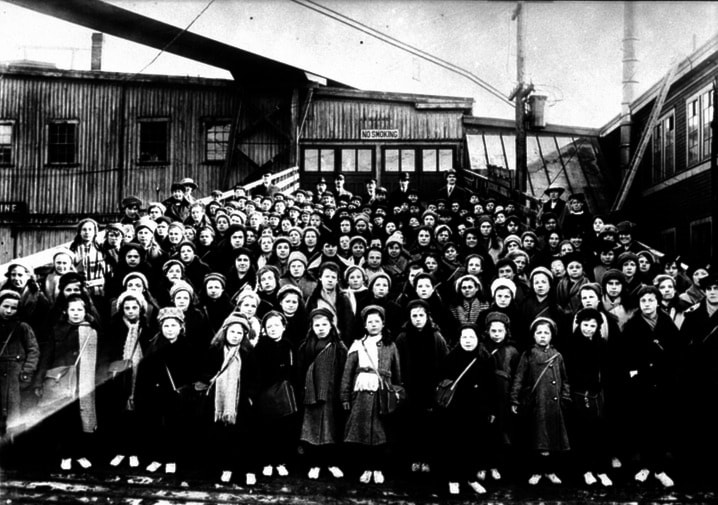Seven years ago, while researching his family tree, Slocan Valley writer Art Joyce made a curious discovery: immigration records showed his paternal grandfather came to Canada with three other boys and a chaperone, but no parents.
“That struck me as odd,” Joyce says, “so I consulted local genealogist Pat Rogers, who said ‘I’ll bet you’ve got Home Children in your family.’”
 The term didn’t mean anything to him at the time, but it launched his exploration of a migration scheme that saw more than 100,000 poor or orphaned British children sent to other Commonwealth nations — mainly Canada — as labourers.
The term didn’t mean anything to him at the time, but it launched his exploration of a migration scheme that saw more than 100,000 poor or orphaned British children sent to other Commonwealth nations — mainly Canada — as labourers.
The practice began in 1869 and persisted well into the 20th century, aided by dozens of immigration agencies, many of questionable repute. Children were often exploited and abused, their new lives hardly an improvement on the ones they left behind.
Cyril William Joyce came to Canada from London in 1926 at age 16, sponsored by the Church of England, and worked on northern Alberta farms until adulthood. He married Marjorie Maynard and in the midst of the Great Depression moved to Balfour, then Trail where he worked for Cominco until his retirement. He died in 1998, having returned to England only once. He never stayed in touch with family there — a common side effect of child immigration.
Joyce wanted to know more, but had little to go on. He only met his grandfather a few times. He was fortunate, however, to find a genealogy website maintained by Brian Joyce. When they compared family trees, many names matched. That led to a trip to England in 2009 for a reunion of sorts and to view his grandfather’s old neighborhood of East Ham.
“We very nearly lost this story because he wouldn’t speak about it,” Joyce notes. “Because they were such a poor class in England, they were stigmatized and ashamed when they got to Canada. The best coping strategy was to become invisible.”
Solving his personal family history puzzle prompted Joyce to examine the broader picture. “The wider story interested me because I realized if this happened in my family, it must have happened in many other Canadian families,” he says. Indeed, an estimated four million people can trace their roots to Home Children.
But while a body of literature exists on the phenomenon, Joyce says not much has dealt with it from a Western Canadian perspective. While most children were sent to Ontario and the Maritimes, others like his grandfather went to the Prairies to be trained as farmers. In BC, Fairbridge Farm Schools in Vernon and Duncan received children from the mid-1930s to the late ‘40s.
 By that point, changing attitudes around child psychology finally ended the practice. “They realized plucking children away from their families and sending them across an ocean to a new country with strangers caring for them was simply not healthy in terms of their development,” Joyce says.
By that point, changing attitudes around child psychology finally ended the practice. “They realized plucking children away from their families and sending them across an ocean to a new country with strangers caring for them was simply not healthy in terms of their development,” Joyce says.
He visited archives in Ottawa, Victoria, Nelson, and Vernon and presents his findings in a book, Laying the Children’s Ghosts to Rest: Canada’s Home Children in the West, which will be launched at the Nelson Public Library on Tuesday at 7 p.m., along with Ymir author Vangie Bergum’s Downstream: Bestemor & Me. He’ll also give a reading at the Slocan Community Library on Sunday, June 1 at 1 p.m. as part of a Western Canadian tour.
Joyce, the author of two books on local history and two poetry collections, says his latest work is a blend of memoir, history, and creative non-fiction, and profiles several individual Home Children.
While most have died and others are tight-lipped, Joyce gleaned details from a few who were more open about their experiences. (He also discovered that Leslie Vivian Rogers, the namesake of Nelson's senior high school, was a British Home Child, sent to Canada at age five.)
Joyce avoided writing a straight history, instead exploring long-term psychological and social effects on Canadian families today. Depression, alcoholism, broken families and an inability to adjust socially were common themes.
“Past traumas, even if not communicated, can still be passed down,” he says. “That was eye-opening. But this is also a story of redemption. You have desperately poor children yanked away from everything they’ve ever known and given probably the worst possible start in life, yet many ended up producing stable family homes. To me that’s a kind of personal redemption.”
